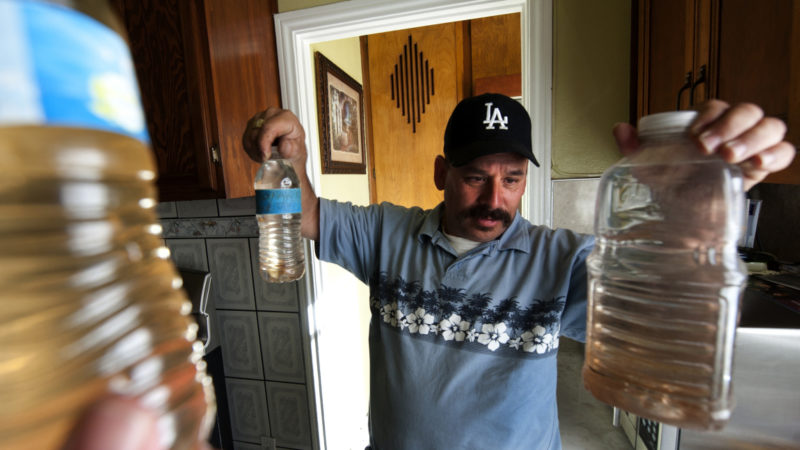The City of Maywood is a small, under-represented community in the heavily industrialized port “Gateway” area of Los Angeles. The residents, more than 26 percent of whom live below the poverty line, rely on groundwater for their water supply that is tainted by manganese, trichloroethylene (TCE), and lead—frequently causing tap water to be brown, bitter tasting, malodorous, and potentially hazardous to health. Despite some increased attention in recent years from state and federal agencies, and some indication that efforts at treatment have resulted in improved water quality, little is known about the source of the contamination, and cleanup efforts have been poorly defined and publicized. Residents continue to voice concerns regarding the poor quality of their water and remain unsure of whether their water is safe to drink.
In 2015-16, a UCLA Practicum team working with clients including Environment Now mapped the distribution of manganese, TCE, and lead in groundwater beneath Maywood and surrounding communities, and conducted drinking water testing at several locations around the City. This effort is a critical step toward identifying industrial or other sources of pollution to Maywood’s drinking water supply. Through its research, the team concluded that high exposure to manganese in drinking water can have adverse health impacts for the general population as well as at-risk populations such as fetuses, infants and children, and seniors. The students also concluded that limitations in publicly available data on industrial activity and pollution spills or releases to the environment hamper efforts to identify direct sources of the pollution, but that it is possible that the pollution has originated from industries that manufacture iron, steel, and batteries, among other sources. There is also the potential that the manganese pollution, in particular, may stem from anoxic conditions in the groundwater that have leached the manganese out of the surrounding soil and rock. Further research is needed both to identify the source or sources of pollution, and to ensure that the current supply of water for Maywood’s residents is safe for their use.
Other data
While our contamination distribution maps have limitations, we can conclude that the areas of highest concentrations of manganese, TCE, and lead are likely the most accurate. In our database, manganese appears in untreated groundwater as high as 1,000 times the legal limit, suggesting that this is an extremely prevalent constituent in Maywood’s groundwater. Moreover, TCE levels reached, at times, over 2,500 times the legal limit, while lead’s maximum value was around 5 times the legal limit. Our investigation into the historical and current contamination of Maywood’s groundwater further solidified the notion that this community continues to struggle with environmental hazards to their health, safety, and livelihoods.
View our Final Report

